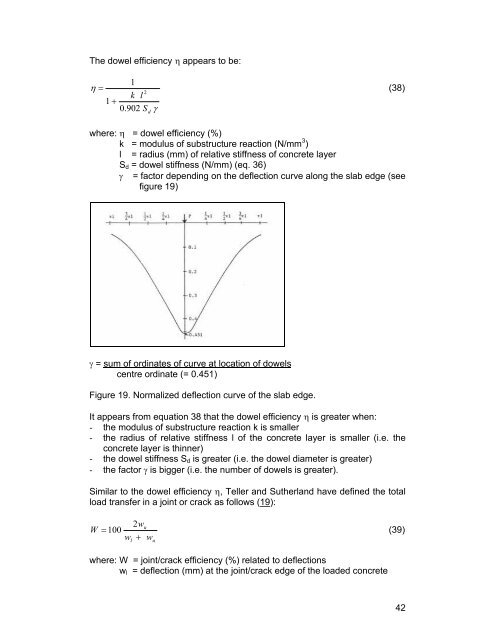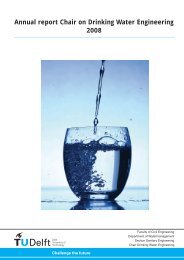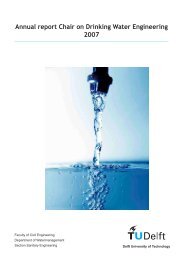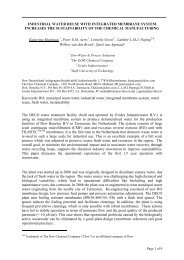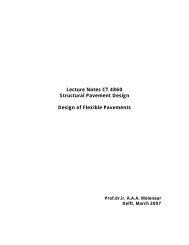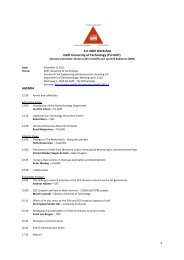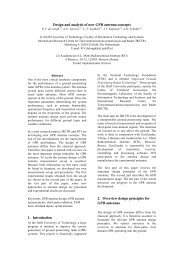CT4860 STRUCTURAL DESIGN OF PAVEMENTS
CT4860 STRUCTURAL DESIGN OF PAVEMENTS
CT4860 STRUCTURAL DESIGN OF PAVEMENTS
Create successful ePaper yourself
Turn your PDF publications into a flip-book with our unique Google optimized e-Paper software.
The dowel efficiency η appears to be:<br />
1 2<br />
η = (38)<br />
k l<br />
1 +<br />
0.<br />
902 γ<br />
S d<br />
where: η = dowel efficiency (%)<br />
k = modulus of substructure reaction (N/mm 3 )<br />
l = radius (mm) of relative stiffness of concrete layer<br />
Sd = dowel stiffness (N/mm) (eq. 36)<br />
γ = factor depending on the deflection curve along the slab edge (see<br />
figure 19)<br />
γ = sum of ordinates of curve at location of dowels<br />
centre ordinate (= 0.451)<br />
Figure 19. Normalized deflection curve of the slab edge.<br />
It appears from equation 38 that the dowel efficiency η is greater when:<br />
- the modulus of substructure reaction k is smaller<br />
- the radius of relative stiffness l of the concrete layer is smaller (i.e. the<br />
concrete layer is thinner)<br />
- the dowel stiffness Sd is greater (i.e. the dowel diameter is greater)<br />
- the factor γ is bigger (i.e. the number of dowels is greater).<br />
Similar to the dowel efficiency η, Teller and Sutherland have defined the total<br />
load transfer in a joint or crack as follows (19):<br />
W<br />
=<br />
2w<br />
u<br />
100 (39)<br />
wl<br />
+ wu<br />
where: W = joint/crack efficiency (%) related to deflections<br />
wl = deflection (mm) at the joint/crack edge of the loaded concrete<br />
42


